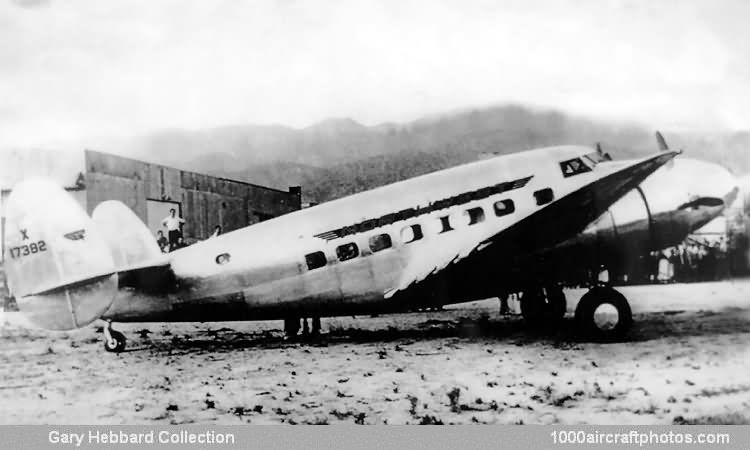04/30/2009. Remarks by Johan Visschedijk: "Designed by Hall Hibbard and Kelly Johnson, construction of the prototype started early 1937, and test pilot Marshall Headle took it to the air for the first flight on July 29, 1937. The aircraft was registered to Lockheed as NX17382 and carried the markings of the launch customer Northwest Airlines, although NX17382 never served with the airline. It was sold on December 28, 1937 to TACA (Transportes Aéreos Centro-Americanos) of Nicaragua, where it was registered as AN-AAH. (The registration number 17382 was re-used on the eighth production aircraft, c/n 1409, as NC17382.)
Within months the aircraft returned to Lockheed and was converted to a cargo version prototype, designated C-14H-1 by Lockheed and reregistered
NX18962, it was briefly tested by the USAAC at Wright Field during the spring of 1938. Rejected by the USAAC the aircraft was converted back to an airliner and was sold to Brazil where it was registered PP-AVB on July 29, 1937. Subsequently it was sold to Nicaragua, where it became AN-TAB, later AN-ACC. The aircraft was lost in a crash at Chontales, Nicaragua, on April 22, 1946.
The fourteen-seat Super Electra incorporated some specific features, including Fowler flaps (first time being used on a production type), fixed wing slots, fully-feathering propellers, and integral fuel tanks. The prototype, and nineteen production aircraft designated 14-H, were fitted with two 875 hp Pratt & Whitney Hornet S1E-Gs radials and thirty-two 14-H2s were fitted with Hornet S1E2-Gs radials. Another 60 aircraft were produced using different engines, while 120 aircraft were produced under license in Japan.
A further development was the military Hudson, of which (and its variants), 2,941 were produced."
